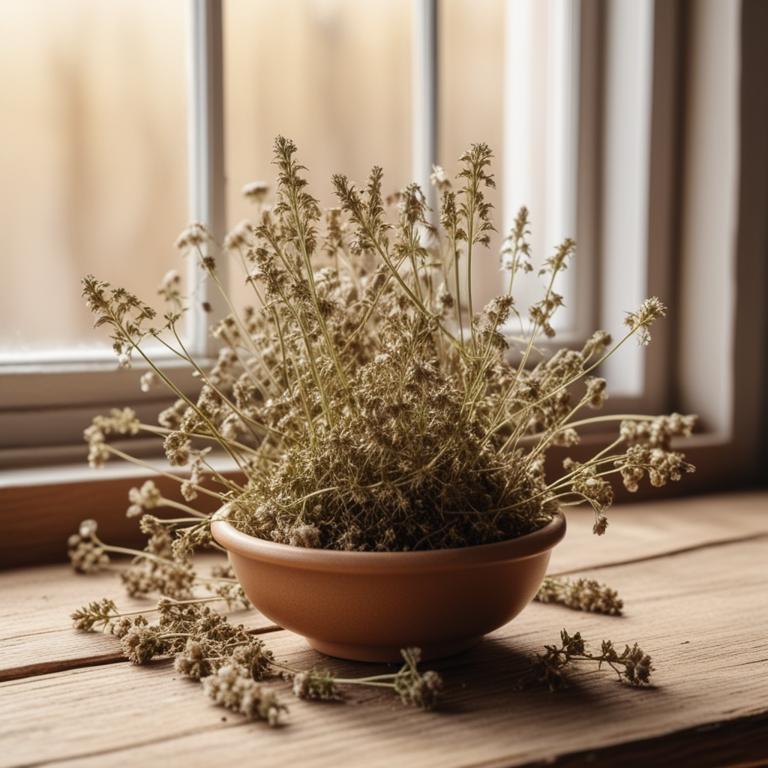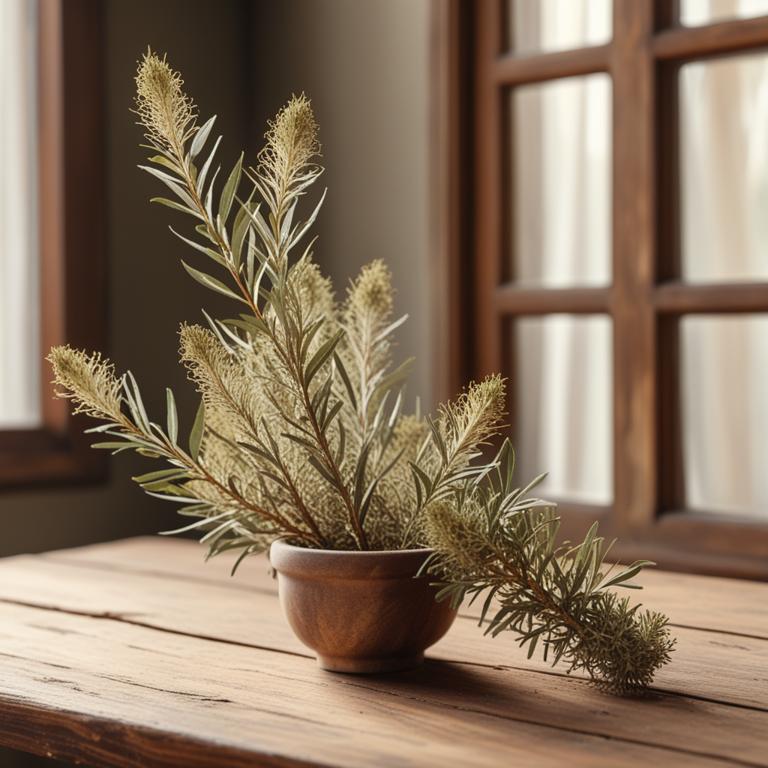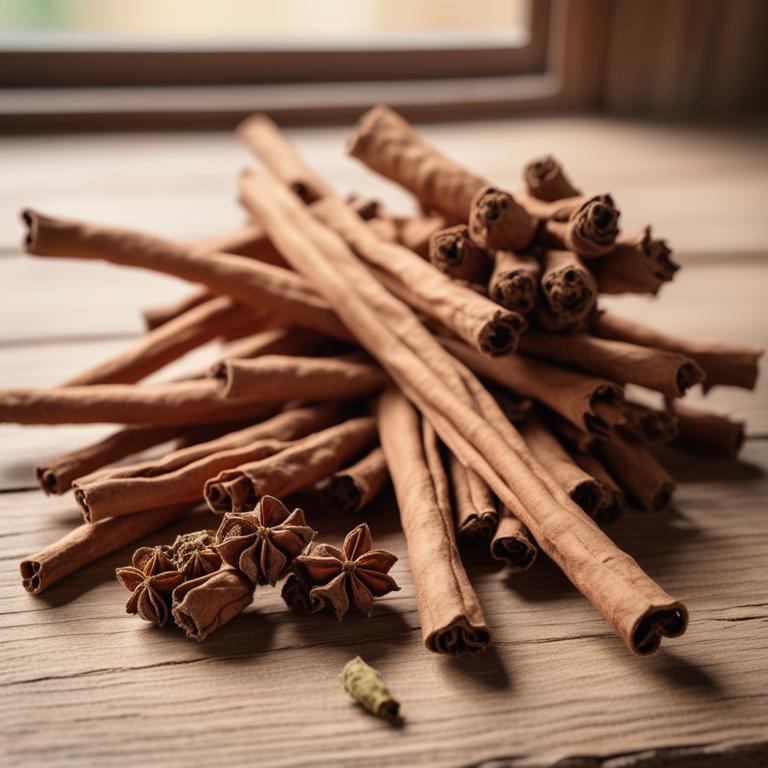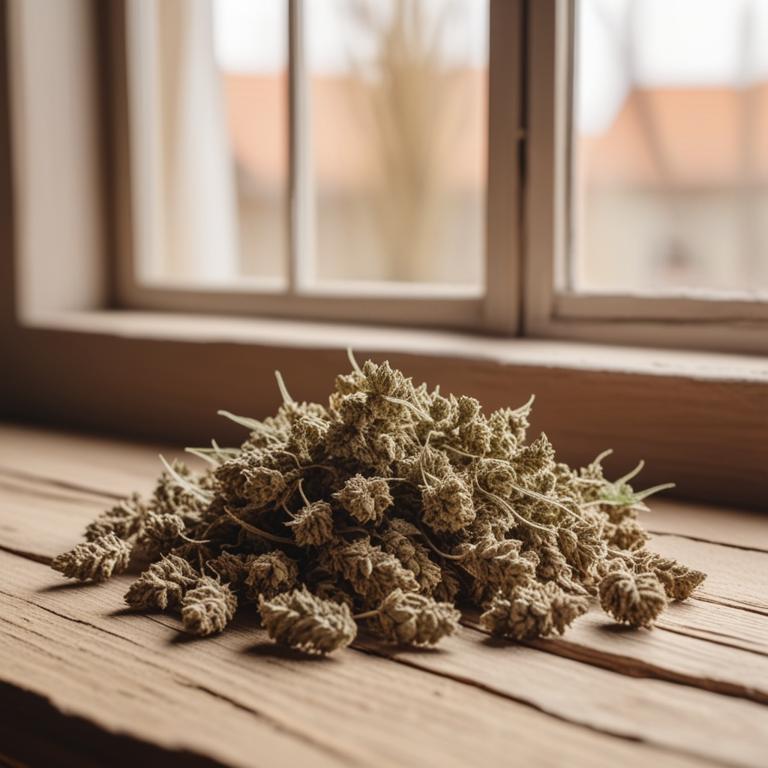Updated: Nov 30, 2024
10 Herbal Creams For Sunburn
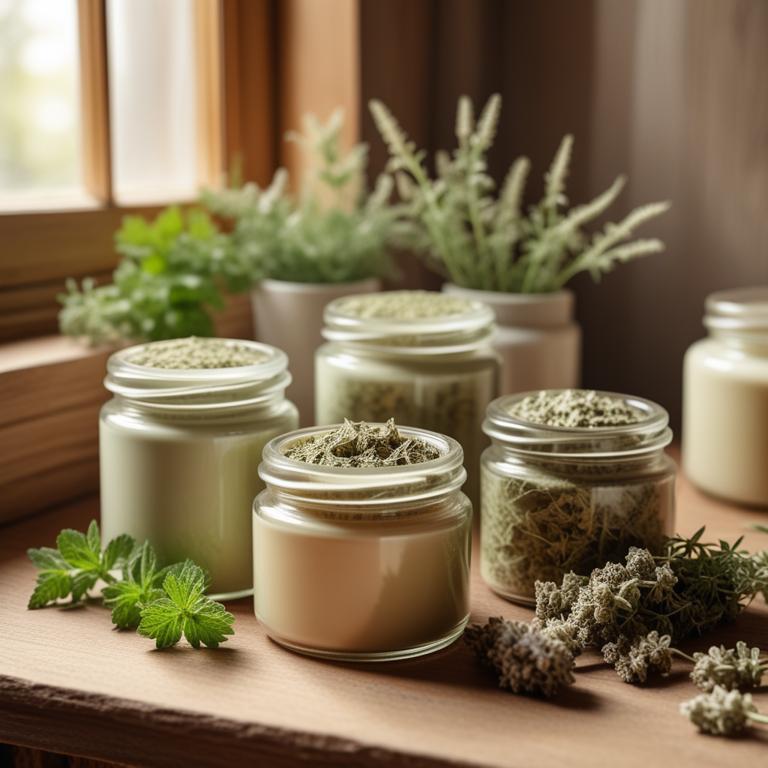
Herbal creams for sunburn are a great way to soothe and calm your skin after a day in the sun.
These creams are made from plants that have been used for centuries to heal and protect the skin. Let's take a look at three herbs that are commonly used to relieve sunburn: Calendula officinalis, Aloe barbadensis, and Arnica montana. Calendula officinalis, also known as marigold, is a natural anti-inflammatory that can help reduce redness and swelling caused by sunburn. It's also antimicrobial, which means it can prevent infection and promote healing. Aloe barbadensis, or aloe vera, is another popular herb used to soothe sunburn. It's rich in vitamins and minerals, including vitamin E, which helps to repair damaged skin cells. Arnica montana is a herb that's often used to relieve pain and inflammation.
It contains compounds called sesquiterpene lactones, which have anti-inflammatory properties that can help reduce swelling and pain caused by sunburn. These herbs can be used in creams, lotions, and ointments to provide relief from sunburn. They work by reducing inflammation, preventing infection, and promoting healing, which can help to speed up the recovery process. Using herbal creams for sunburn can bring many benefits to your life. For one, they're a natural and gentle way to soothe and calm your skin, without exposing yourself to harsh chemicals. They're also a great alternative to over-the-counter creams and lotions that can contain artificial fragrances and dyes. By using herbal creams, you can avoid these harsh chemicals and promote healthy skin healing.
Additionally, these herbs are often easy to find in nature or in health food stores, making them a convenient and accessible option for sunburn relief.
This article explains in detail what are the best herbal teas for sunburn and wh.
Also, you may be interested in...
Today Free Bonus!
The Ultimate Herb Drying Checklist
(For Long-Lasting Powerful Medicinal Effect)
How to easily dry herbs that don't mold and that keep their strong medicinal power for more than 1 year.
Table of Contents
1. Calendula officinalis

Calendula officinalis creams contains triterpenoids, flavonoids, and carotenoids.
These compounds help to soothe and calm sunburned skin by reducing inflammation and preventing further damage. The anti-inflammatory properties of these constituents, particularly the triterpenoids, decrease redness and swelling associated with sunburn. Calendula's antioxidants, including flavonoids and carotenoids, neutralize free radicals that can cause skin cells to die and speed up the healing process.
By reducing inflammation and promoting healing, Calendula officinalis creams can help to alleviate the discomfort and pain caused by sunburn.
- Gather 1 cup of Calendula officinalis flowers, 1 cup of carrier oil (coconut or olive oil), and a double boiler.
- Dry the Calendula flowers in a low-temperature oven (150°F) for 2 hours. Let them cool completely.
- Combine the dried Calendula flowers and carrier oil in the double boiler. Heat the mixture over low heat (100°F) for 2 hours.
- Strain the mixture through a cheesecloth into a bowl. Discard the solids. Add 1 tablespoon of beeswax and 1 tablespoon of vitamin E oil.
- Melt the beeswax and mix well. Pour the mixture into small containers. Let it cool and solidify before use.
2. Aloe barbadensis

Aloe barbadensis creams contains several active constituents, including aloin, aloe-emodin, and vitamins A, C, and E. These compounds work together to help soothe and calm sunburned skin.
Aloin and aloe-emodin have anti-inflammatory properties, which reduce redness and swelling, while vitamins A and C promote skin health and aid in the repair of damaged skin cells. Vitamin E has antioxidant properties, which help protect the skin from further damage caused by UV radiation.
By combining these properties, aloe barbadensis creams can provide relief from the discomfort and pain associated with sunburn.
- Gather ingredients: 1 cup Aloe vera gel, 1/4 cup coconut oil, 2 tablespoons beeswax, 2 tablespoons shea butter, and 1 teaspoon vitamin E oil.
- Melt coconut oil and beeswax in a double boiler or a heat-proof bowl set over a pot of simmering water.
- Add shea butter and stir until melted and smooth. Remove from heat.
- Add Aloe vera gel, vitamin E oil, and stir well. Pour mixture into a bowl and let cool until solid.
- Once solid, whip the mixture with a hand mixer or whisk until light and fluffy. Your Aloe barbadensis cream for sunburn is now ready to use.
3. Arnica montana
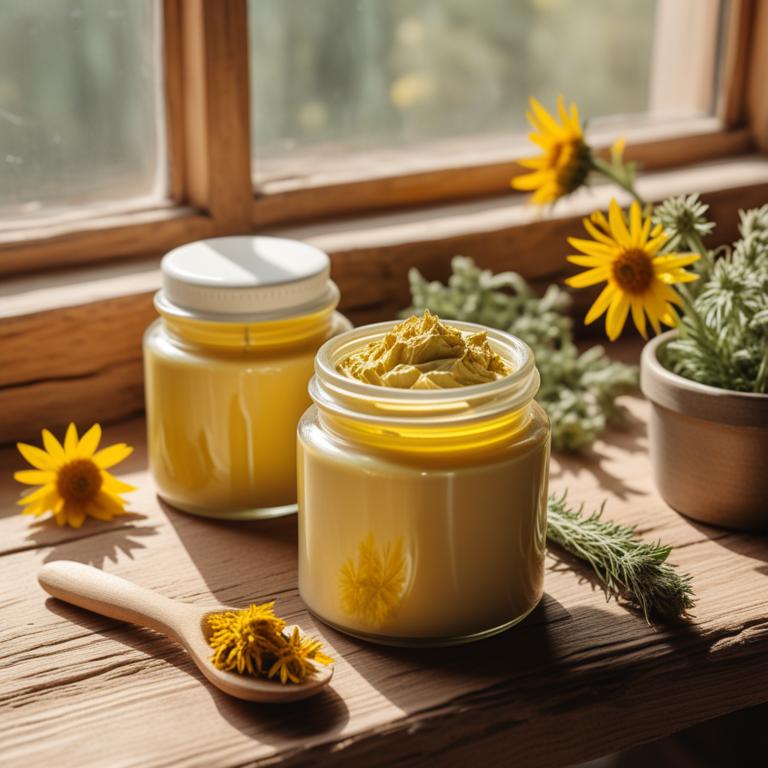
Arnica montana creams contains bioactive constituents like flavonoids, phenolic acids, and sesquiterpenes.
These compounds have anti-inflammatory and antioxidant properties that help soothe sunburned skin. The sesquiterpenes in Arnica montana, specifically helenalin and 11-epi-isobaccharin, reduce redness and swelling by inhibiting the production of inflammatory mediators. The antioxidant properties of flavonoids and phenolic acids in Arnica montana creams protect the skin from further damage caused by UV radiation and promote the healing process.
By reducing inflammation and oxidative stress, Arnica montana creams help alleviate the discomfort and promote the recovery of sunburned skin.
- Gather 1 cup of coconut oil, 1/4 cup of beeswax, 2 tablespoons of shea butter, 2 tablespoons of Arnica montana tincture, and 2 tablespoons of aloe vera gel.
- Melt the coconut oil and beeswax in a double boiler or a heat-proof bowl set over a pot of simmering water.
- Remove the melted mixture from the heat and add the shea butter, stirring until it's fully incorporated.
- Add the Arnica montana tincture and aloe vera gel to the mixture, stirring well to combine.
- Pour the mixture into a jar or tin and let it cool and solidify before use.
4. Hypericum perforatum

Hypericum perforatum creams contains flavonoids and naphthodianthrones as its active constituents.
The flavonoids, specifically quercetin and kaempferol, have antioxidant properties that help protect the skin from further damage caused by sunburn. The naphthodianthrones, such as hyperforin and hypericin, have anti-inflammatory properties that can help reduce redness and swelling associated with sunburn. By reducing inflammation and protecting the skin, Hypericum perforatum creams can help promote healing and soothe sunburned skin.
The anti-inflammatory and antioxidant properties of Hypericum perforatum creams make it a suitable treatment for sunburn.
- Gather 250g of beeswax, 100g of coconut oil, 50g of shea butter, 20g of Hypericum perforatum oil, and 2 tablespoons of vitamin E oil.
- Melt the beeswax, coconut oil, and shea butter in a double boiler over low heat, stirring occasionally.
- Remove the melted mixture from heat and let it cool slightly.
- Add the Hypericum perforatum oil and vitamin E oil to the melted mixture and stir well.
- Pour the mixture into small containers, let it cool, and store in the refrigerator for up to 6 months.
5. Symphytum officinale
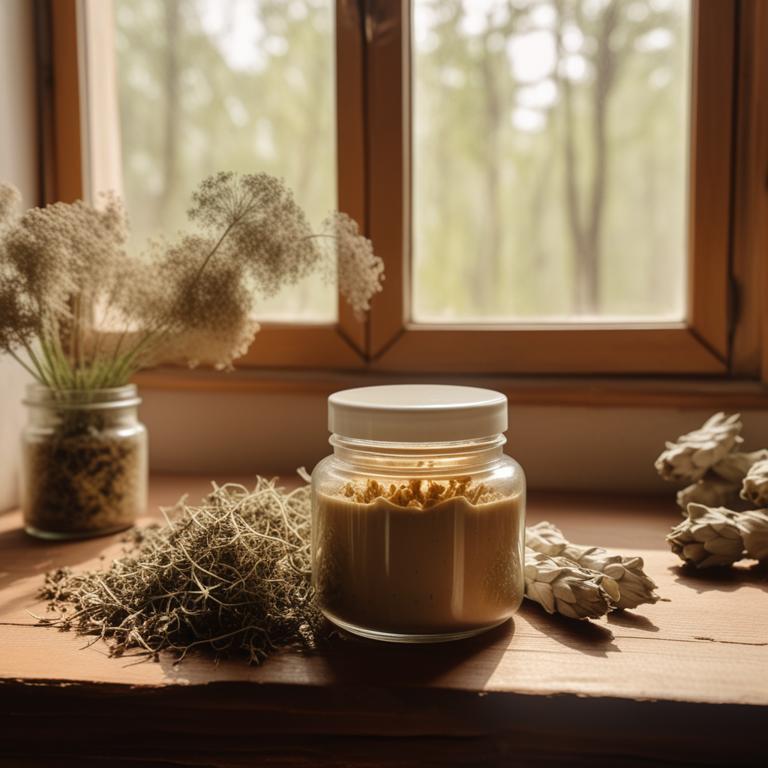
Symphytum officinale creams contains active constituents like allantoin and glycosides.
These compounds help soothe and calm sunburned skin. Allantoin, in particular, is known for its ability to promote cell regeneration and hydration, which is essential for healing sunburned skin. Glycosides in the cream also have anti-inflammatory properties that can reduce redness and swelling caused by sunburn.
The combination of these properties in Symphytum officinale creams makes it a good option for relieving sunburn symptoms.
- Gather 1 cup of dried Symphytum officinale root, 1 cup of coconut oil, 1 cup of shea butter, and 10 tablespoons of beeswax.
- Melt the coconut oil and shea butter in a double boiler or a heat-proof bowl over a pot of simmering water.
- Add the dried Symphytum officinale root to the melted oil and butter mixture. Let it steep for 2 hours or overnight.
- Strain the mixture through a cheesecloth or a fine-mesh sieve into a clean bowl. Discard the solids.
- Add the melted beeswax to the mixture and stir until it's fully incorporated. Pour the mixture into a jar and let it cool before using.
6. Echinacea purpurea
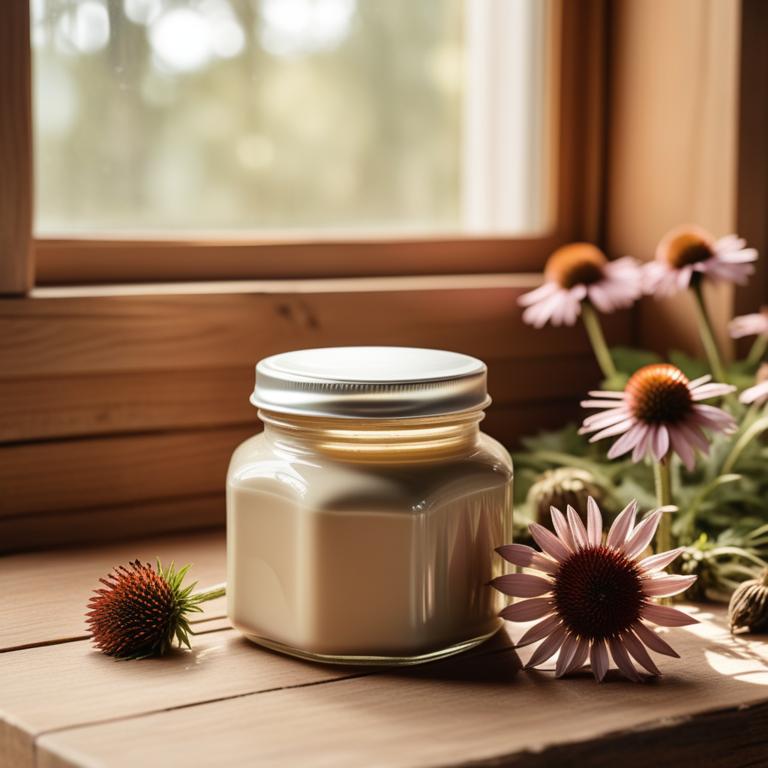
Echinacea purpurea creams contains the bioactive constituents alkylamides, caffeic acid, and phenolic acids.
These compounds have anti-inflammatory and antioxidant properties, which help to soothe and protect sunburned skin. Alkylamides reduce inflammation and alleviate pain, while caffeic acid and phenolic acids neutralize free radicals and promote skin cell regeneration. The antioxidant properties of these constituents also help to prevent further damage to the skin caused by UV radiation.
By applying Echinacea purpurea creams to sunburned skin, you can help to calm and protect it, promoting a faster recovery.
- Gather 1 cup of Echinacea purpurea flowers, 1 cup of coconut oil, 1/2 cup of shea butter, 2 tablespoons of beeswax, 2 tablespoons of vitamin E oil, and 2 tablespoons of aloe vera gel.
- Heat the coconut oil in a double boiler and add the shea butter. Stir until melted and smooth.
- Add the Echinacea purpurea flowers to the melted mixture and let it steep for 2-3 hours. Strain the mixture through a cheesecloth or a fine-mesh sieve.
- In a separate bowl, melt the beeswax in a double boiler. Add the vitamin E oil and aloe vera gel. Stir until well combined.
- Combine the strained Echinacea mixture with the beeswax mixture. Stir well and pour into small containers. Let cool and harden before use.
7. Ginkgo biloba

Ginkgo biloba creams contains flavonoids and terpenoids, which are active constituents that help soothe sunburned skin.
Flavonoids, particularly quercetin and kaempferol, have anti-inflammatory properties that reduce redness and swelling caused by sunburn. Terpenoids, such as bilobalide and ginkgolides, have antioxidant properties that help protect the skin from further damage and promote healing. Ginkgo biloba creams also contain bilobalide, which has anti-inflammatory and antioxidant properties that help calm and moisturize sunburned skin.
By reducing inflammation and promoting healing, ginkgo biloba creams can help alleviate the discomfort and pain associated with sunburn.
- Gather ingredients: 1 cup of coconut oil, 1/4 cup of beeswax, 2 tablespoons of shea butter, 2 tablespoons of Ginkgo biloba extract, 2 teaspoons of vitamin E oil.
- Melt the coconut oil and beeswax in a double boiler or a microwave-safe bowl in 10-second increments, stirring between each interval, until smooth.
- Add the shea butter and stir until melted and smooth.
- Add the Ginkgo biloba extract and vitamin E oil, and stir well to combine.
- Pour the mixture into a clean container and let it cool and solidify. Use as a sunburn cream by applying a thin layer to affected areas.
8. Plantago major
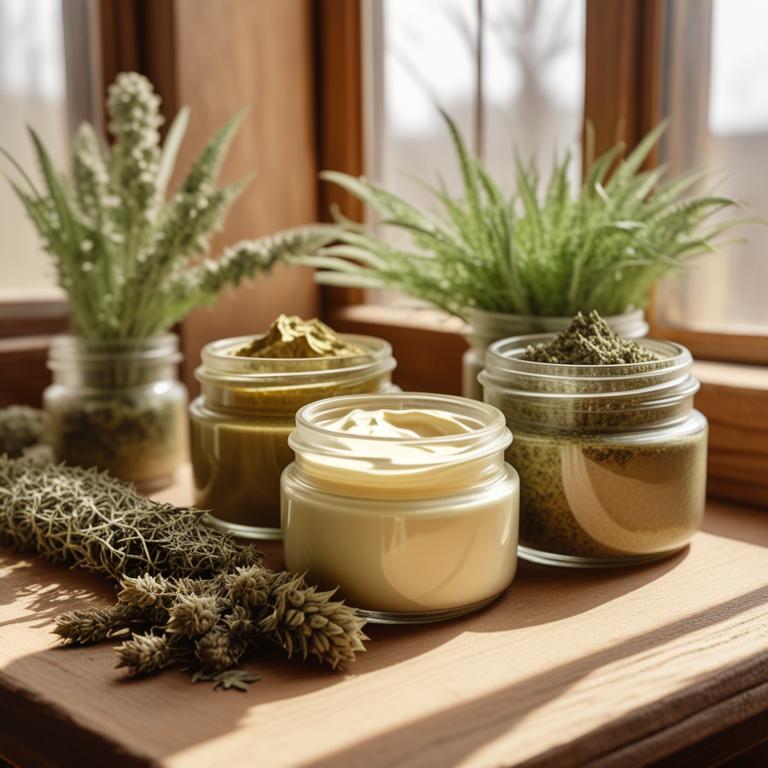
Plantago major creams contains aucubin and caffeic acid, which are anti-inflammatory compounds that help soothe sunburned skin.
Aucubin has a powerful antioxidant effect, reducing damage to skin cells caused by UV radiation. Caffeic acid, on the other hand, has anti-inflammatory properties that reduce redness and swelling associated with sunburn. Plantago major creams also contain plant sterols, which help repair damaged skin cells and promote skin regeneration.
By reducing inflammation and promoting skin repair, Plantago major creams can help alleviate discomfort and promote healing of sunburned skin.
- Gather 1 cup of fresh Plantago major leaves and 2 cups of water. Clean and chop the leaves.
- Combine the chopped leaves and water in a pot. Bring to a boil, then reduce heat and simmer for 10 minutes.
- Let the mixture cool, then strain it through a cheesecloth or a fine-mesh sieve into a bowl. Discard the solids.
- In a separate bowl, mix 1/2 cup of beeswax and 1/4 cup of coconut oil until well combined.
- Add 1/2 cup of the cooled Plantago major infusion to the beeswax mixture and stir until smooth. Pour the mixture into a container and let it cool and set before using as a sunburn cream.
9. Glycyrrhiza glabra

Glycyrrhiza glabra creams contains active constituents like glycyrrhizin and flavonoids, which have anti-inflammatory and antioxidant properties.
These compounds help to soothe and calm sunburned skin, reducing redness and swelling. The anti-inflammatory properties of glycyrrhizin and flavonoids also help to reduce the pain associated with sunburn. Glycyrrhizin has also been shown to have a protective effect on the skin, helping to lock in moisture and support the skin's natural barrier function.
By reducing inflammation and promoting skin health, Glycyrrhiza glabra creams can provide relief and support for sunburned skin.
- Gather ingredients: 2 cups of distilled water, 1 cup of coconut oil, 1/2 cup of beeswax, 2 tablespoons of Vitamin E oil, and 2 tablespoons of powdered Glycyrrhiza glabra root.
- Melt the coconut oil and beeswax in a double boiler or a heat-proof bowl set over a pot of simmering water.
- Add the distilled water to the melted oil and wax mixture, and stir until well combined.
- Add the Vitamin E oil and powdered Glycyrrhiza glabra root to the mixture, and stir until smooth.
- Pour the mixture into a clean container and let it cool and solidify. Once set, your Glycyrrhiza glabra cream for sunburn is ready to use.
10. Melissa officinalis

Melissa officinalis creams contains boiactive constituents like linalool and linalyl acetate, which have anti-inflammatory properties.
These compounds help reduce redness and swelling caused by sunburn. The antimicrobial properties of Melissa officinalis also prevent infection and promote wound healing. Additionally, the skin-soothing properties of linalool and other boiactive constituents calm irritated skin and promote skin regeneration.
The combination of these properties makes Melissa officinalis creams a good choice for soothing sunburned skin.
- Gather 1 cup of Melissa officinalis flowers, 1/2 cup of coconut oil, and 1/4 cup of beeswax.
- Heat the coconut oil in a double boiler until it melts.
- Add the Melissa officinalis flowers to the melted coconut oil and let it steep for 10-15 minutes.
- Strain the mixture and add the beeswax. Heat until the beeswax dissolves.
- Remove from heat and let the mixture cool. Pour into a container and store in the fridge.
FAQ
Can drinking herbal tea prevent sunburn from forming?
Drinking herbal tea won't prevent sunburn from forming, but some teas may help soothe sunburned skin.
Rooibos tea, for example, contains antioxidants that can calm redness and irritation.
Other herbal teas, like peppermint and chamomile, have anti-inflammatory properties that may help ease sunburn discomfort.
Is it safe to consume herbal teas for sunburn every day?
While herbal teas for sunburn can provide soothing relief, it's not recommended to drink them daily.
Some herbs can be irritating or interact with medications if consumed excessively.
It's best to limit your intake to when you need it most - after a day in the sun.
How long does it take for herbal teas to show results in sunburn?
Herbal teas can help soothe sunburn, but it depends on the specific tea and the severity of the burn. Aloe vera tea, for example, can start to calm the skin within a few hours, while chamomile tea might take a bit longer, about 4-6 hours, to start showing results.
Related Articles
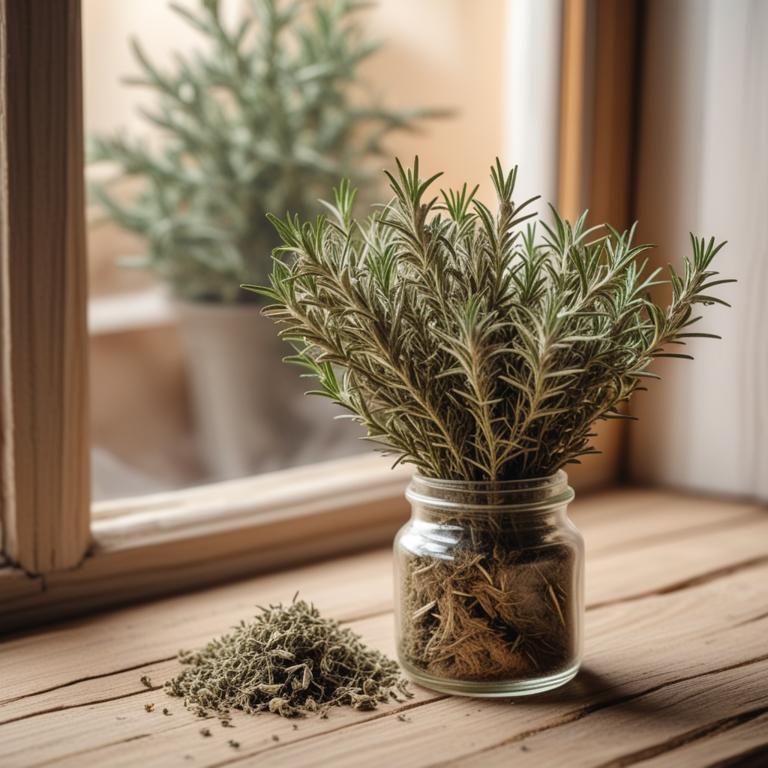
Oily Face: Causes and Natural Remedies Using Medicinal Herbs and Herbal Preparations
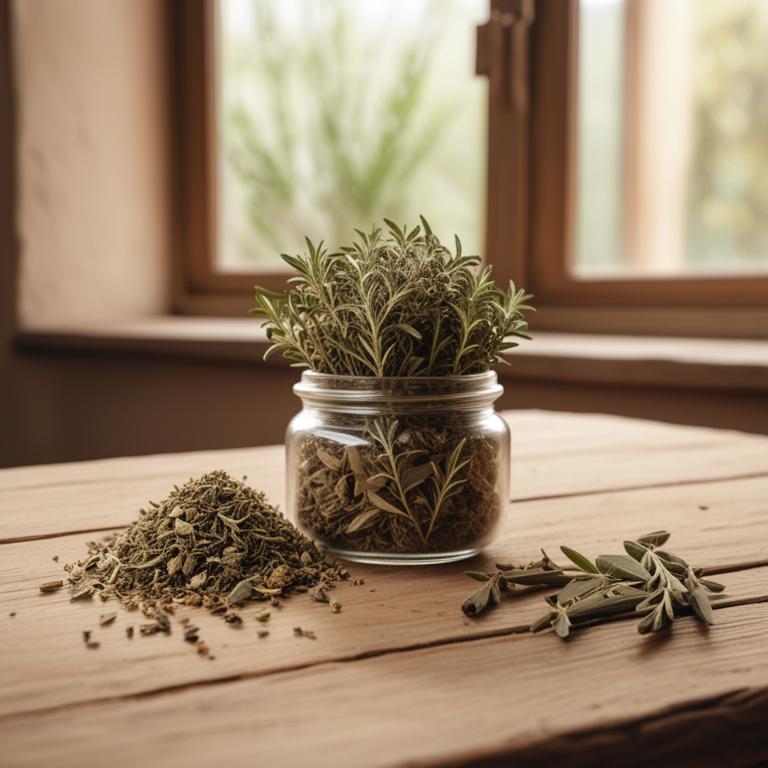
Grey Hair Causes, Treatment, and Medicinal Herbal Preparations
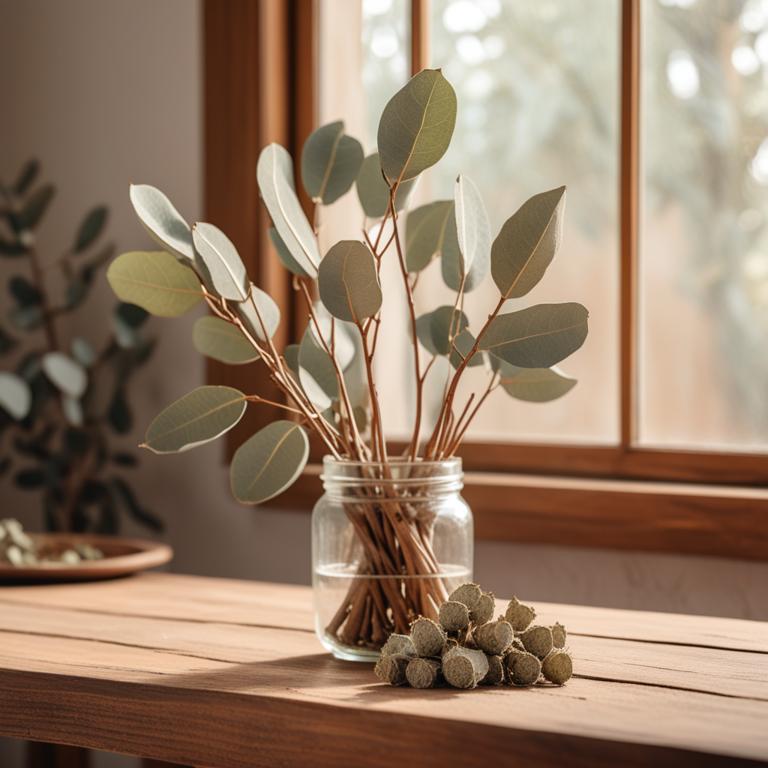
Causes, Symptoms, and Herbal Remedies for Periodontal Disease Prevention and Management
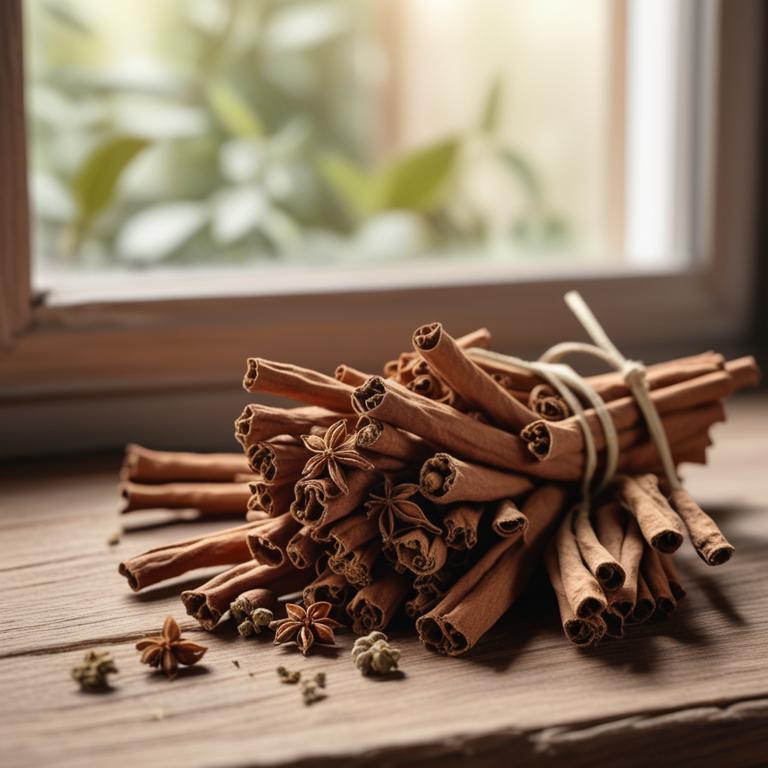
Oral Thrush: Understanding the Causes, Medicinal Herbs, and Herbal Solutions for Relief
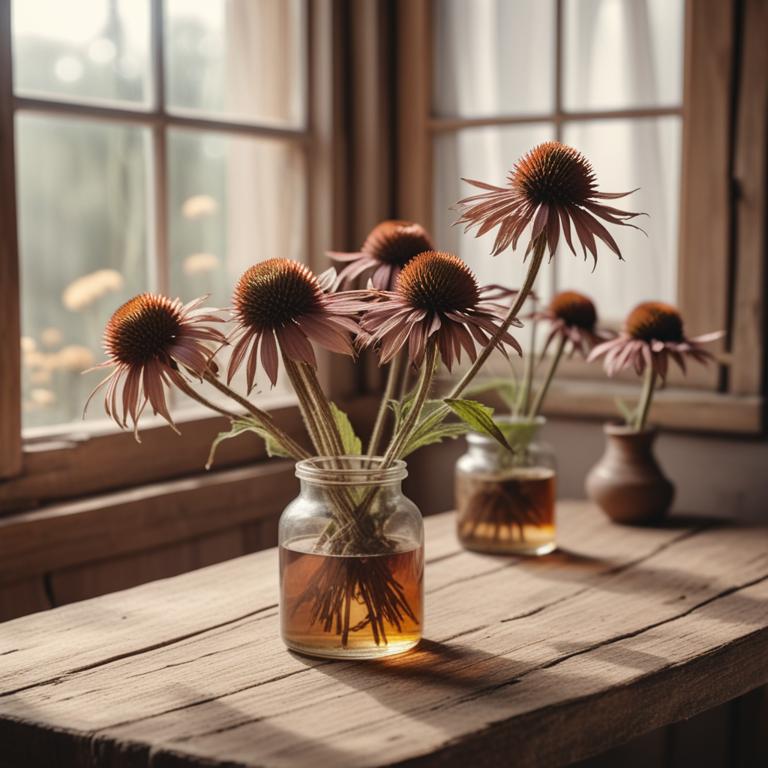
Nose Bleeding: Causes and Alternative Therapies with Medicinal Herbs
